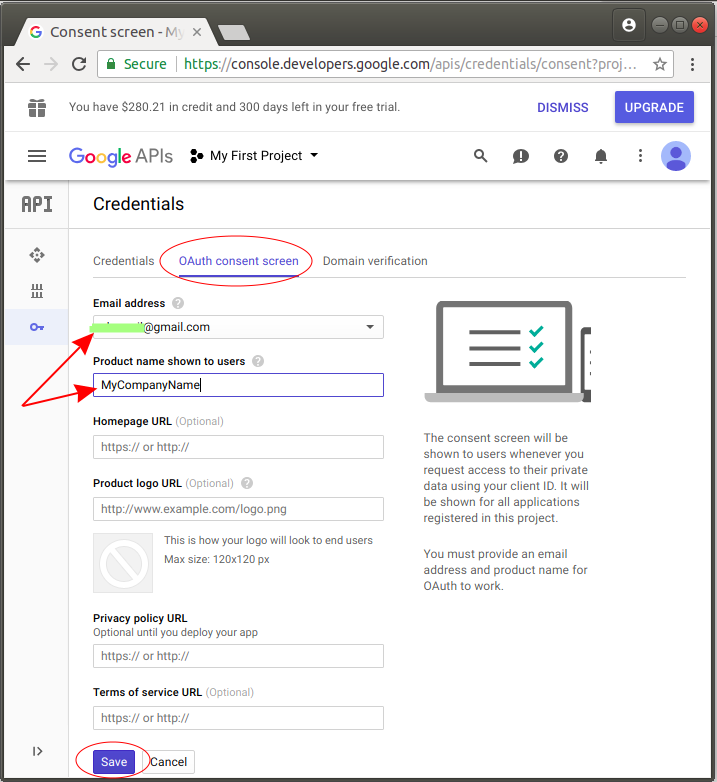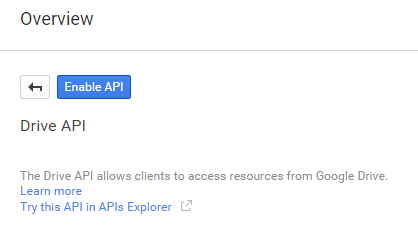

- #Access google drive api apk#
- #Access google drive api update#
- #Access google drive api android#
- #Access google drive api code#
- #Access google drive api Offline#
Copy and the SHA1 finger print in the SHA1 textbox.ħ. Access files anytime, anywhere from your desktop and mobile devices. This will print the keystore details which will include SHA1 fingerprint.Ħ.
#Access google drive api android#
Password for the default Android debug.keystore is, yes you guessed it right.

Then execute `keytool -keystore user\username\.android\debug.keystore -list -v` Keytool is a JDK utility shipped with Android studio, locate it in your Android Studio installation “Android\Android Studio\jre\bin” You would need keytool to read the fingerprint. I managed to pass the authentication process and get the token.
#Access google drive api code#
As the official google-api-python-client doesn't support Python3 I've decided to code myself the oauth2 method and access to google drive api with urlib.request. Otherwise default “debug.keystore is located in the user/username/.android folder”. I want to make an installed aplication in Python3 to manage the Google Drive files in my google account.
#Access google drive api apk#
However in that case your IDE or if you are building APK headless you will need to specify the keystore location and the password. You can also have a common keystore file for your project, if you have multiple developers. You will need to locate your default keystore on your computer. Yes even your debug apks have keystore that you may not even know. Each Android app (apk) is signed using keystore.

, professor translated in Italian with the masculine professore ). Googlen ücretsiz hizmeti, Türkçe ile 100den fazla dil arasnda annda kelime, ifade, web sayfas çevirisi yapabilir.
#Access google drive api Offline#
SHA1 fingerprint: Here little explanation is required. With the On-device Translation API, app developers can get access to offline models for fast, dynamic translation of text into 58 languages.Enter the package name, you can locate package name for your Android APP in the AndroidManifest.xml under your project.Ģ.1.5. Give it a friendly “Name” for the client ID, ideally APPNAME-USER-DEBUG or APPNAME-PROJECT-PROD.Ģ.1.4. Select Application type as “Android”Ģ.1.3. Step 2.1 (Special Thank you MG Developer for point out this additional step, original post is here : On Google API Credential Console Click “Create OAuth client ID”Ģ.1.2. This implementation was to be all automated.This step will allow you to use a login dialog in your android app. The only way this scope will work is if you have a login screen and the service account is able to authenticate, which wasn't the case in this situation.
#Access google drive api update#
An important thing I stumbled upon was the fact that the scope below didn't allow me to impersonate my service account to copy, create, or update a file. There are different scopes the middleman can have access to that limit the user to act on only the necessary data. Lets call this account jira-middleman-google.Īuthenticate with OAuth 2.0. This account can't own a drive of its own, but allows you to download a JSON file with credentials to impersonate a service account. An IAM account will only act as player to impersonate a Jira service account. Another reason we don't want to use a real user is if this user leaves the company and their user is deactivated, it will affect the implementation. Now, let’s add a function to our connecttogoogledrive. This is critical because if there are any issues with the implementation you can pin down who performed the action-in this case, an automation user, rather than an actual user. We have now obtained our access token which we can use to connect to Google Drive API resources. With all automation, you need a "user" whose sole purpose is to perform the automation. It was time to use the Google Drive API! The Solution In order to save data space, this team decided to continue to allow the reporter to submit only the Google Doc link. The reporter would submit a link to the Google Drive document on the Jira ticket, so the legal team could track exactly what they had approved in their very own Google Drive folder. The reason why this was important for this team was for legal reasons. I'll walk you through how I handled it so you can set it up yourself. I recently came across an interesting use case, one that involved storing a copy of a document in Google Drive when a Jira ticket went through an approval workflow. You will need to create service account credentials over on google cloud console for this to work. For this sample I will be using a service account.

You'd be surprised by the many ways Jira is able to integrate with other applications, such as Google Drive. I thought today we would have a look at uploading a file to google drive using the google drive api and the google api go client library.


 0 kommentar(er)
0 kommentar(er)
